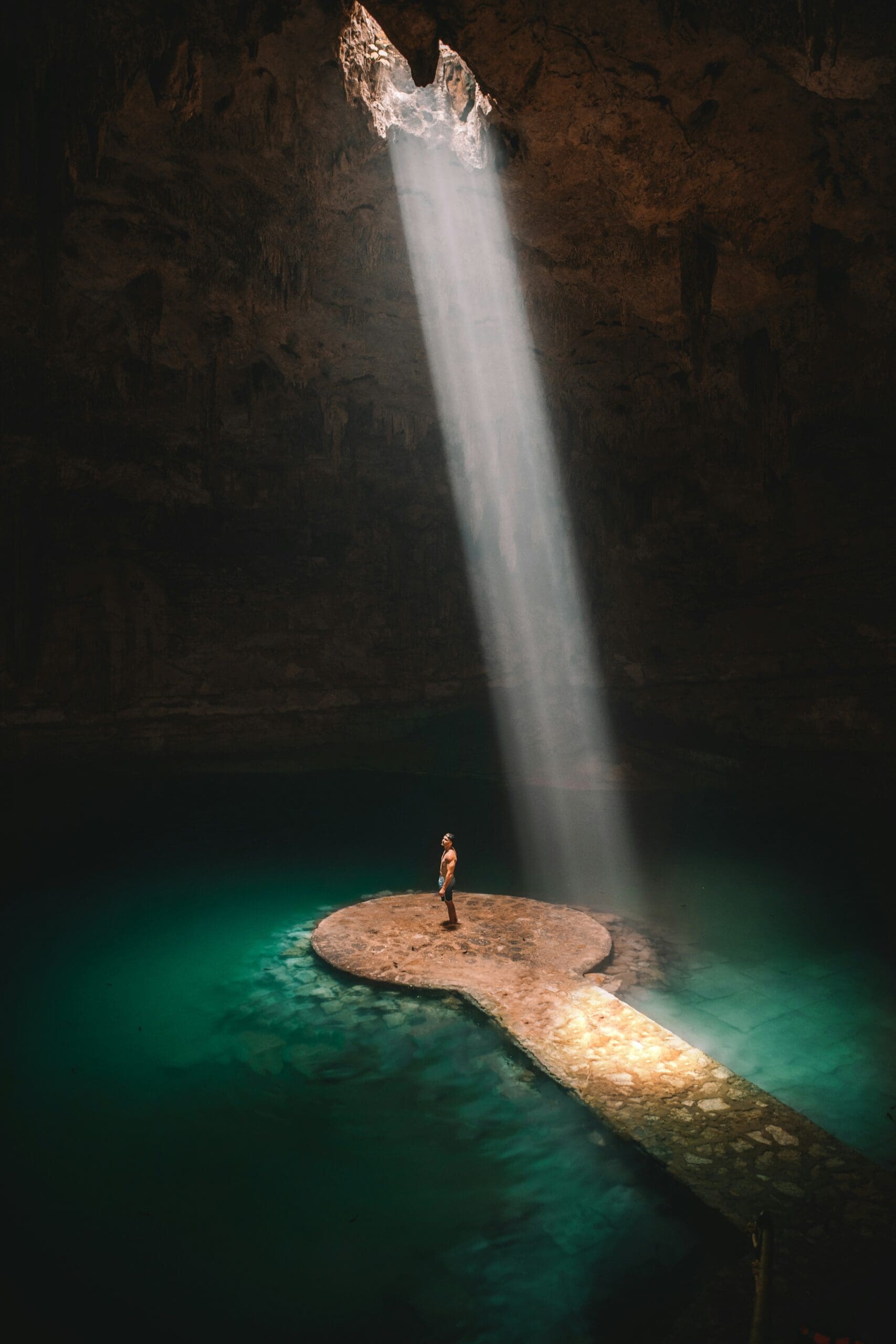Mexico
Country Name: Mexico
Capital City: Mexico City
Population: Approximately 130 million (2024 est.)
Official Language: Spanish
Currency: Mexican Peso (MXN)
Time Zone: Mexico spans multiple time zones, from UTC -8 to UTC -5




Diving Overview
Mexico offers diverse diving experiences with its clear, warm waters, vibrant coral reefs, and abundant marine life. The country’s dive sites are ideal for both novice and experienced divers, featuring everything from shallow reefs to deep cenotes and dramatic walls.
- Number of Dive Sites: Over 200
- Types of Diving: Reef, wreck, wall, drift, and cenote diving.
- Marine Biodiversity Highlights: Whale sharks, manta rays, sea turtles, various species of tropical fish, and colorful coral reefs.
- Average Water Temperatures: 24-29°C (75-84°F).
- Visibility Range: 15-40 meters (49-131 feet).
Important Information
Optimal Dive Seasons
The best diving conditions are typically from November to May, with calm seas and excellent visibility.
Major Airports
Mexico City International Airport (Mexico City), Cancún International Airport (Cancún), Los Cabos International Airport (San José del Cabo), Cozumel International Airport (Cozumel)
The Travel Tip
A 3mm wetsuit is generally sufficient for diving in Mexico’s warm waters, though a shorty may be suitable during the summer months.
Weather Patterns
Mexico has diverse climates ranging from tropical to desert. Coastal areas generally experience a tropical climate with a wet season from May to October and a dry season from November to April.
Internal Transportation
Options include domestic flights, buses, taxis, and car rentals, providing connectivity across the country.
Attractions
Major attractions include the ancient Mayan ruins of Chichén Itzá, the beaches of Cancún and Riviera Maya, the colonial city of Guanajuato, the cultural richness of Mexico City, and the natural beauty of Copper Canyon.
Top Dive Regions
Mexico offers a variety of top dive regions, each featuring unique underwater landscapes and rich marine life. From the vibrant coral reefs and underwater museums of Cancún and Riviera Maya to the crystal-clear waters and drift dives of Cozumel, divers can explore a range of exciting sites. Cabo San Lucas provides encounters with pelagic species and dramatic underwater topography, while the Yucatán Peninsula’s cenotes offer unique freshwater diving experiences in natural sinkholes with stunning geological formations. These regions cater to divers of all levels, making Mexico a premier destination for underwater adventures.

Cancún and Riviera Maya
Known for their vibrant coral reefs, underwater museums (MUSA), and easy access to the Great Maya Reef, the second-largest coral reef system in the world.

Cozumel
Famous for its crystal-clear waters, vibrant coral reefs, and drift diving, with sites like Palancar Reef and Santa Rosa Wall offering spectacular underwater scenery.

Cabo San Lucas
Offers diverse dive sites, including the Sand Falls, Land’s End, and encounters with pelagic species such as hammerhead sharks and whale sharks.

Yucatán Peninsula Cenotes
Provides unique freshwater diving experiences in natural sinkholes with clear waters and stunning geological formations.
Marine Life
Mexico’s marine life is incredibly diverse, offering vibrant underwater experiences for divers and snorkelers. The coral reefs around the Caribbean coast are teeming with tropical fish, such as angelfish, parrotfish, and butterflyfish. Larger marine animals like whale sharks, manta rays, and sea turtles are commonly encountered, especially in areas like Isla Mujeres and Isla Holbox. The Pacific coast features encounters with pelagic species, including various sharks, rays, and large schools of fish. The Yucatán Peninsula’s cenotes host unique freshwater species and stunning underwater landscapes with stalactites and stalagmites.
Common Species: Whale sharks, manta rays, sea turtles, reef sharks, angelfish, parrotfish, butterflyfish, moray eels, lobsters, and crabs.
Seasonal Highlights: Whale shark sightings peak from June to September, particularly around Isla Mujeres and Isla Holbox, while manta rays and sea turtles are more commonly seen from May to October.
-
Dive Into the Beauty of Cancun
Explore the stunning beaches, rich history, and vibrant culture of Cancun in this captivating article.
-
Top 20 Dive Centers in Cozumel
The Most Dynamic Dive Centers in Cozumel Cozumel is commonly known as the Mexican Caribbean’s precious stone and is a favorite spot for scuba divers worldwide. It is part of the Mesoamerican Barrier Reef System, which is the second largest…
-
Best Place to Dive Mexico: Vibrant Reefs and Mysterious Cenotes
Explore Mexico’s stunning reefs and cenotes with this informative article on the vibrant underwater world.
-
Top 20 Dive Centers in Playa del Carmen
Introduction to the Best Dive Centers in Playa del Carmen Playa del Carmen, located along Mexico’s beautiful Riviera Maya, is one of the world’s premier scuba diving destinations. This lively town is nestled on the stunning Caribbean Sea coast and…
-
Dive sites in Hvar
Introduction Diving in Hvar is nothing short of magical, offering an underwater experience that is as enchanting as the breathtaking landscapes above the waves. Tucked away in the crystal-clear waters of the Adriatic Sea, Hvar holds a prime spot on…
-
Dive sites in Cozumel
Introduction When you think of premier diving destinations, Cozumel consistently ranks at the top. This island off the eastern coast of Mexico’s Yucatán Peninsula is a diver’s paradise, renowned for its crystal-clear waters, vibrant coral reefs, and diverse marine life.…
-
Best time to dive in Cozumel
Diving in Cozumel is a bucket-list experience for underwater enthusiasts. This Mexican island, situated in the Caribbean Sea, offers an underwater paradise bursting with vibrant coral reefs, plentiful marine life, and crystal-clear waters. Understanding the best time to dive here…



